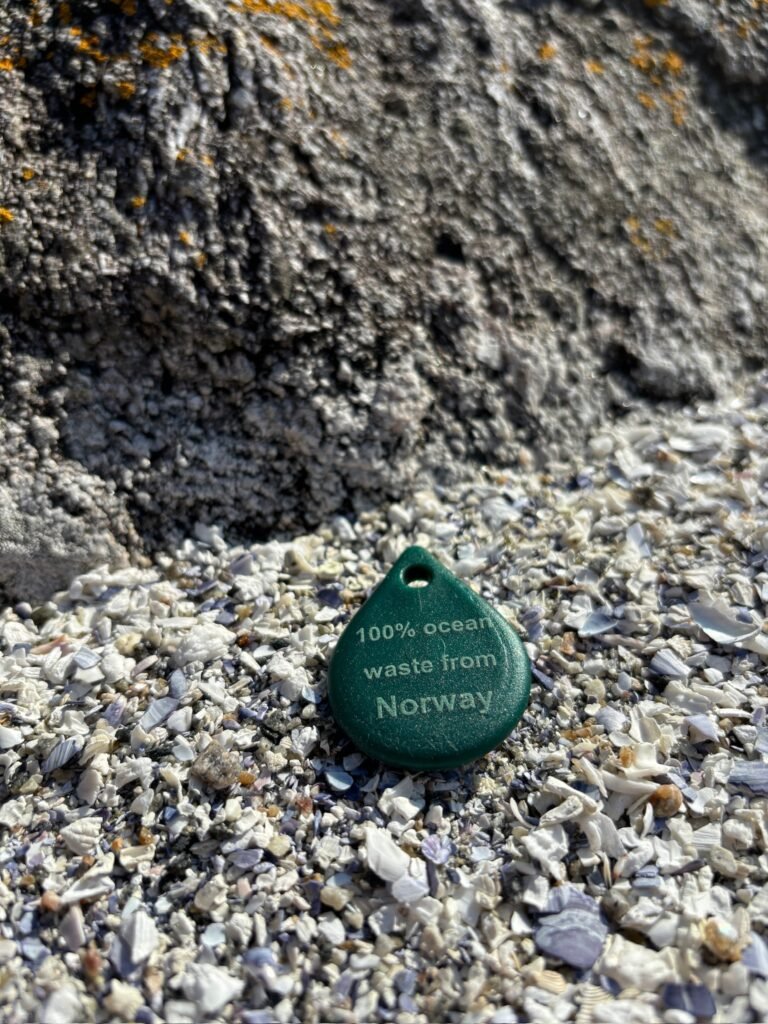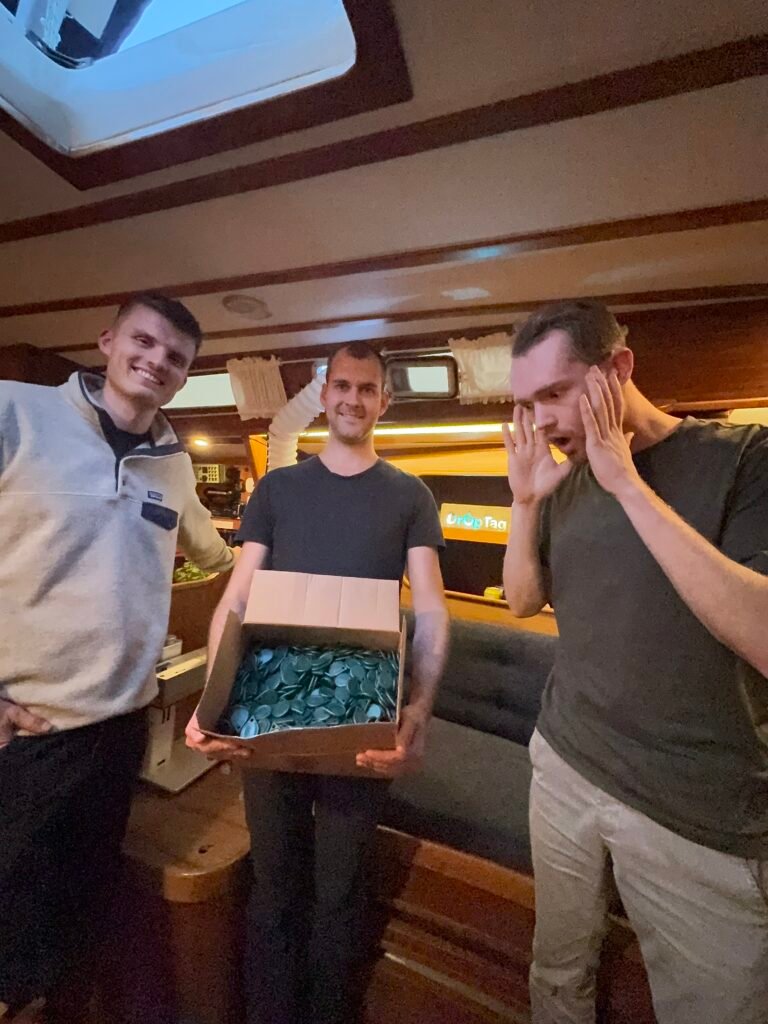Thanks for joining us! Could you share a bit about DropTag and the story behind it?
DropTag Team: Thank you for having us! DropTag started as our university project, originally a student enterprise, and then became our bachelor’s thesis. We recently graduated in Informatics and Automation, so programming is our main expertise.
The idea began because I kept losing my keys. I thought it’d be amazing if I could somehow connect them to a system that helps me recover them. From there, we realized we could take it further by creating a product that also shares the story of ocean plastic, showing where each tag’s materials were collected, processed, and ultimately turned into a DropTag.


What’s it been like taking DropTag from an idea to a real product?
DropTag Team: It’s been a lot of hard work. We’re balancing product development with making sustainable choices, which takes time. We want the tags to be produced locally in Norway, and we’re working to make sure every choice we make is environmentally sound. There’s also a lot to think about with logistics – like making sure the product and packaging meet our goals for quality and sustainability.
It sounds like there’s a big focus on sustainability. Could you tell us about your materials?
DropTag Team: Absolutely. We’re currently using plastic from ocean waste recycled by a company called Oceanize. Our plastic comes from various places in Norway, like Rørvik and Brønnøysund. Most of it is old ropes and fishing nets. Our next goal, which we are already working towards, is to recycle plastic directly from cleanup operations.
You mentioned that DropTag is traceable. How does this work?
DropTag Team: Each tag has a unique QR code, which users can scan to see the journey of that specific piece of plastic. For instance, it could show details of the beach it was collected from, who was involved in the cleanup, and its path through production. We think it’s a unique way to connect people to the bigger picture of ocean plastic cleanup.
We want to use storytelling to make an impact. Each tag has a history, and by logging in, people can see it. The goal is to share the reality of plastic pollution in a way that feels personal. We also hope it inspires people to support ocean conservation.
So each tag is unique with its own history?
DropTag Team: Exactly! Each tag is traceable to its source, so it’s more than just a product – it’s a narrative of the plastic crisis and the people cleaning it up.
What has it been like trying to launch DropTag?
DropTag Team: It’s been a journey, that’s for sure! We are actually really close to launching – maybe two or three weeks away. We’ve faced a few hurdles along the way, but we’re almost there, and we’re excited to see it come to life!
What would You say has been the biggest challenge in using ocean plastic?
DropTag Team: Definitely the contamination! Ocean plastic isn’t clean – it’s often mixed with sand, salt, and other debris. Plus, plastic is not just plastic; there are all kinds of different types. And since the plastic has been in the water, it can be weathered or weakened. That’s why we’ve focused on a product that doesn’t need to be super strong structurally. Our advice to others working with ocean plastic is to think about what the plastic will be used for and understand that it’s not suitable for everything.
I love that you’re working from a sailboat office! How did that come about?
Yes, we actually got a sailboat to save on costs. Living on the boat means we can invest more into DropTag and worry less about rent. Plus, it feels fitting to work on something ocean-related while being literally right by the sea. It’s definitely an adventure, but it keeps us close to our purpose.
Who would be your dream partner in this journey?
DropTag Team: Ideally, we’d love to work with organizations that support recycling and environmental impact. We’ve been looking at the possibility of a partnership with facilities that can handle ocean plastic for production. And longer term, we’d love to partner with brands that align with our mission, like those in outdoor gear or sustainable tourism.
Lastly, any advice for those who want to create products from ocean plastic?
DropTag Team: Be prepared for challenges! Ocean plastic is often heavily degraded and mixed with all kinds of impurities, which limits its use. It’s not suitable for every product, especially if strength or cleanliness is required. But if you can work with these limitations, there’s a lot you can do.
And I’d add – think beyond plastic. If you’re not aiming to make a statement about plastic pollution, look for other materials that might be easier to work with. Our goal with DropTag is to show what’s possible and inspire people to care about the problem, but using other materials can be just as impactful if it serves the mission.
Thank you both for sharing the story of DropTag! Any last thoughts?
DropTag Team: Thanks for giving us a platform to share our journey! We’re excited to bring DropTag into the world and hope people can connect with our mission.

